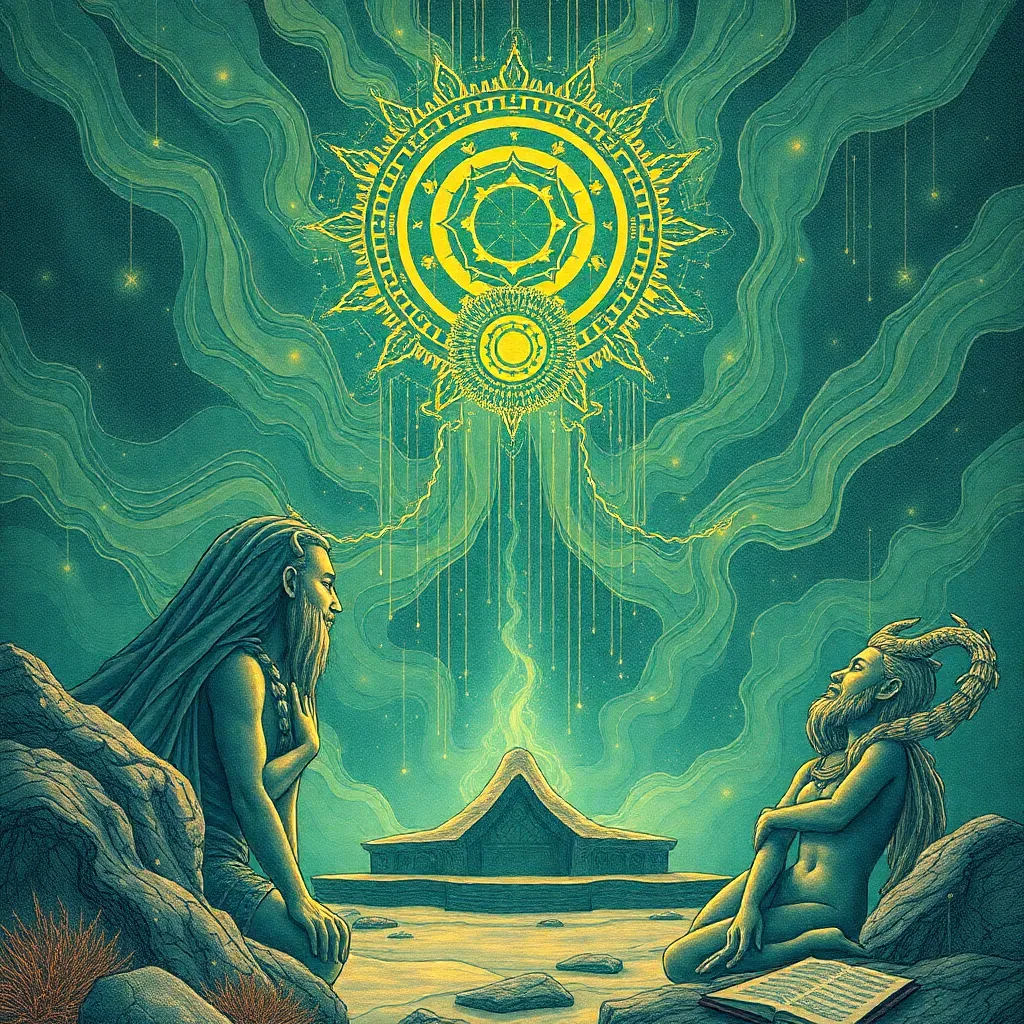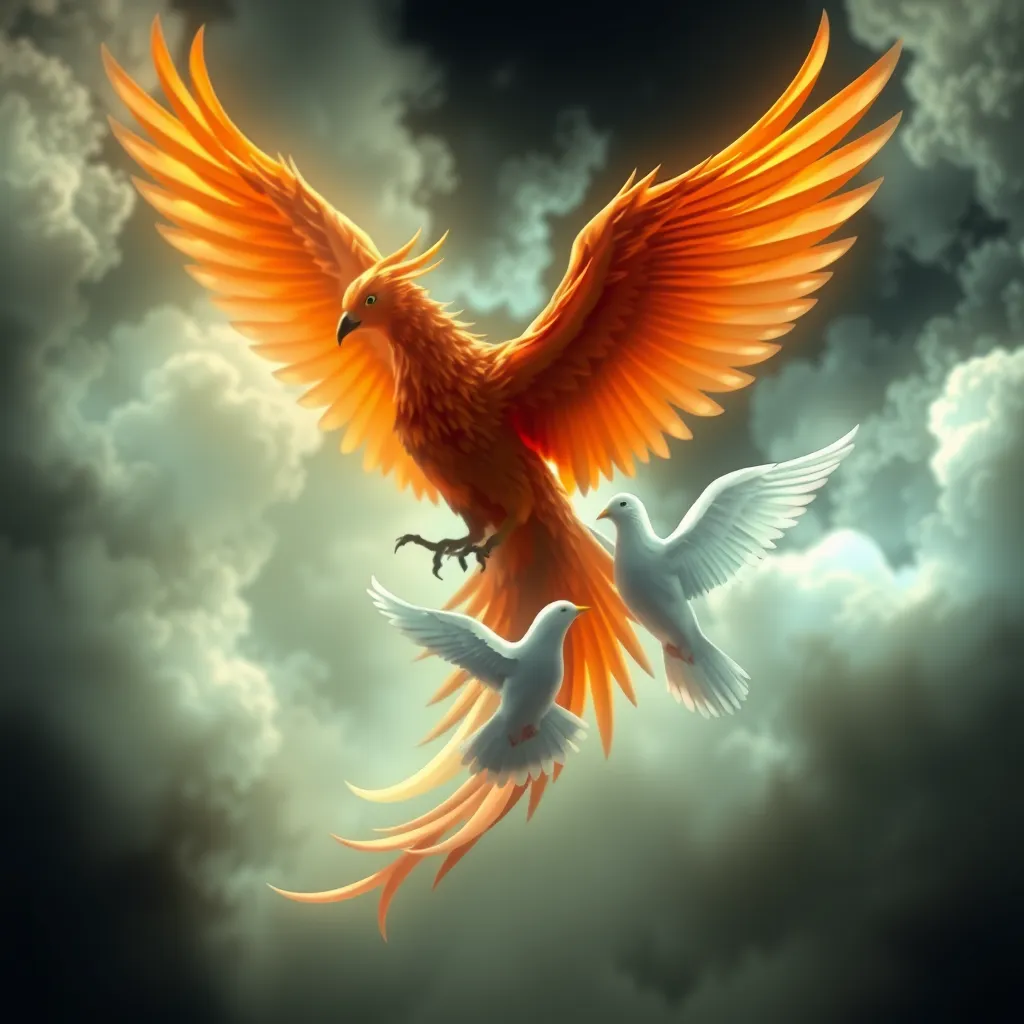Celestial Warriors of the Aztec Pantheon: Gods of the Sun and Moon
I. Introduction
The rich tapestry of Aztec mythology is woven with intricate stories and deities that reflect the beliefs and values of the Aztec civilization. At the core of this mythology is the importance of celestial bodies, particularly the Sun and the Moon, which held profound significance in the daily lives and spiritual practices of the Aztecs.
This article aims to explore the pivotal roles of the Sun and Moon gods within Aztec culture, delving into their symbolism, attributes, and the mythological narratives that shaped the understanding of life, death, and the cosmos in Aztec society.
II. The Role of Sun and Moon in Aztec Cosmology
In Aztec cosmology, the Sun and Moon were not merely celestial bodies; they were revered as deities that governed the cycles of time and life itself. Their movements were believed to influence agricultural cycles, seasonal changes, and human fate.
- Symbolism: The Sun represented life, strength, and warmth, while the Moon symbolized femininity, intuition, and the cycles of nature.
- Cyclic Nature: The Aztecs understood time as cyclical, with the Sun and Moon marking the passage of days, months, and years.
- Agricultural Calendar: The Sun’s position influenced planting and harvesting, while lunar phases were linked to fertility and growth.
III. Huitzilopochtli: The Sun God and Warrior Deity
Huitzilopochtli, the god of the Sun and war, was one of the most important deities in the Aztec pantheon. His origins are steeped in myth, depicting him as a powerful and fierce warrior.
According to Aztec mythology, Huitzilopochtli was born fully grown and armed, emerging from the womb of Coatlicue, the earth goddess. His birth was marked by conflict, as his siblings, the stars and the Moon, attempted to prevent his emergence. Huitzilopochtli fought valiantly, ultimately defeating them and asserting his dominance.
Visually, Huitzilopochtli is often depicted with a hummingbird or as a warrior adorned in feathers and carrying a shield. His fierce demeanor symbolizes the relentless power of the Sun, which was essential for life.
As a warrior deity, Huitzilopochtli was associated with human sacrifice. The Aztecs believed that to ensure the Sun’s daily journey across the sky, they must offer blood and hearts to appease him. This practice reflected a deep-seated belief in reciprocity between the gods and humanity.
IV. Tezcatlipoca: The God of the Night Sky
Tezcatlipoca, the god of the night sky, embodies a complex duality as both a creator and destroyer. He is often associated with chaos and conflict but is equally revered for his role in creation and sustenance.
One of the most distinct symbols of Tezcatlipoca is his obsidian mirror, which represents both reflection and destiny. This mirror was believed to hold the power to reveal truths and the potential for destruction, highlighting the dual nature of existence.
The rivalry between Tezcatlipoca and Huitzilopochtli is a recurring theme in Aztec mythology. Their struggles symbolize the eternal conflict between day and night, creation and destruction, and the balance of forces in the universe.
V. Tonatiuh: The Solar Deity of the Aztec Civilization
Tonatiuh, another significant solar deity, was associated with the Fifth Sun, representing the current era in Aztec cosmology. He was revered as the embodiment of the Sun’s heat and light, essential for the sustenance of life.
The worship of Tonatiuh involved elaborate rituals and offerings. The Aztecs believed that to ensure the Sun’s continued presence in the sky, they must provide sacrifices, often involving the hearts of captives.
Tonatiuh’s worship also included:
- Festivals: Celebrations dedicated to Tonatiuh were marked by music, dance, and elaborate feasting.
- Temples: The main temple in Tenochtitlan was dedicated to the Sun, where priests performed rituals to honor him.
- Symbolism: Often depicted with a fiery face and adorned with rays of sunlight, Tonatiuh represents the life-giving force of the Sun.
VI. Coyolxauhqui: The Moon Goddess and Sister of Huitzilopochtli
Coyolxauhqui, the Moon goddess, was the sister of Huitzilopochtli and played a crucial role in Aztec lunar mythology. Her story is one of celestial battles and the dynamics of familial conflict.
The mythological background of Coyolxauhqui portrays her as a powerful figure who, alongside her other siblings, attempted to kill Huitzilopochtli during his birth. However, she was ultimately defeated, which symbolizes the struggle between the Sun and the Moon.
Coyolxauhqui’s celestial battles are rich in symbolism:
- Descent of the Moon: Her dismemberment by Huitzilopochtli is interpreted as the waning of the Moon, reflecting the cycle of lunar phases.
- Lunar Rituals: The Aztecs performed rituals honoring Coyolxauhqui to ensure lunar fertility and balance.
- Symbol of Femininity: As a moon goddess, she embodies the feminine aspects of nature and the cycles of life.
VII. The Interplay Between Sun and Moon Deities
The relationship between the Sun and Moon deities in Aztec mythology illustrates a delicate balance of power and duality. The myths surrounding Huitzilopochtli and Coyolxauhqui captivate the imagination, revealing the complexities of their interactions.
Key myths that illustrate this interplay include:
- The Battle of the Siblings: The conflict between Huitzilopochtli and Coyolxauhqui signifies the eternal struggle between light and darkness.
- Cycles of Life: The interconnectedness of their stories reflects the cyclical nature of existence, as day gives way to night.
- Spiritual Understanding: This duality is foundational to understanding Aztec spirituality, where balance and harmony are paramount.
VIII. Conclusion
The Sun and Moon gods hold a significant place in Aztec culture, representing the dual forces of life and death, creation and destruction. Huitzilopochtli and Coyolxauhqui’s narratives reflect the complexities of human existence and the natural world.
These celestial warriors continue to resonate in modern interpretations of Aztec mythology, showcasing the enduring power of their stories. The significance of celestial bodies transcends cultures, reminding us of the universal themes of life, balance, and the intricate dance between light and darkness.
In exploring the Aztec pantheon, we gain insights into the rich spiritual heritage that shaped one of the most fascinating civilizations in history.




